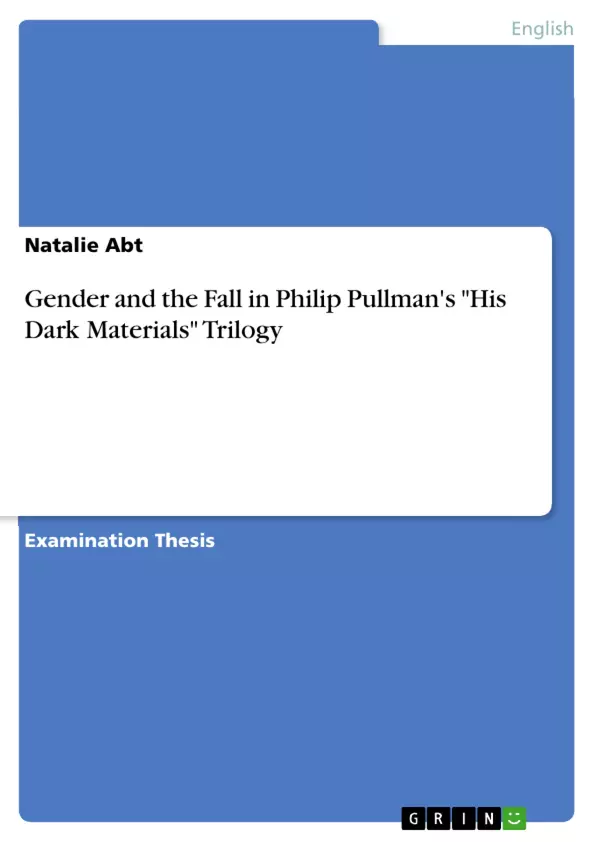There is hardly any story about the origin of human beings that is as well-known as that of Adam and Eve. In every culture and religion legends exist of how mankind came into being, what our function on earth is, why we are mortal and where evil originates from. Hardly any story has had such an immense and lasting influence as the Christian story of the Fall of Man: every child knows the names of the first human beings, countless literary works refer to them, and numerous theories as to the intention of the story have been made. The text has been interpreted literally as well as allegorically, depending on the cultural, temporal and religious background of the interpreter, on the purpose (what they wanted to read out of the text) – and on the sex of the respective reader. Often enough, the story of the Fall served as a justification for discrimination of women and has thus become “the one that has been most generally abused” (Bal 2001: 149) – one starting point for scientists to engage in the origins, reasons, development, and actual status of misogyny. Starting with feminism, scientists have enlarged their field of work to gender relations in general.
Today, we live in a place and time where women and men have equal rights, equal jobs and an equal social status. We think of social inequalities as happening either far away in place or long ago in time. We have the first female German Chancellor ever; a woman has the power to lead and represent our country. But still, a female Chancellor is unique and special in Germany. We find ourselves at the height of a debate about the sexes in society, in politics, and among scientists. The work of scientists and feminists has been going on and developing for the last three or four decades and is one of the reasons why today’s society is as equal as it is. This does not mean, however, that the only objective of the so-called gender studies is to bring about equality – on the contrary, even in apparently equal societies there is a lot more to examine than the status of women.
Inhaltsverzeichnis (Table of Contents)
- 1. Introduction
- 2. Origin and studies of gender
- 2.1. The Christian construction of gender: the Fall
- 2.1.1. Analysis of Genesis 2-3
- 2.1.2. Affirmative implications of Genesis 2-3
- 2.2. Scientific investigations: gender studies
- 2.2.1. About gender studies
- 2.2.2. Gender studies and fantasy fiction
- 2.2.3. The protagonists' names
- 2.1. The Christian construction of gender: the Fall
- 3. Gendered worlds
- 3.1. Familiar cultures
- 3.1.1. Lyra's Oxford: medieval patriarchy
- 3.1.2. Witches and bears: single-sex societies
- 3.2. Other worlds
- 3.2.1. Cittàgazze: dystopia
- 3.2.2. The Mulefa: utopia
- 3.1. Familiar cultures
- 4. Biblical allegories: Protagonists in HDM
- 4.1. Mary Malone
- 4.1.1. Mary's life: science versus religion
- 4.1.2. The serpent and the saint
- 4.2. Mrs Marisa Coulter
- 4.2.1. Femme fatale, Lilith or vicious stepmother
- 4.2.2. Mother fatale or loving mother?
- 4.3. Lyra Belacqua / Silvertongue
- 4.3.1. Lyra's childhood: missing role models
- 4.3.2. Lyra as female hero
- 4.1. Mary Malone
- 5. The Fall in HDM
- 5.1. Prerequisites
- 5.1.1. Eve and Adam
- 5.1.2. The Church
- 5.2. The Fall
- 5.2.1. Two antipodal versions
- 5.2.2. Lyra and Will
- 5.1. Prerequisites
Zielsetzung und Themenschwerpunkte (Objectives and Key Themes)
This essay analyzes the portrayal of gender in Philip Pullman's His Dark Materials trilogy, exploring how Pullman reimagines the biblical story of the Fall through the lens of gender studies. The essay examines the complexities of gender roles and expectations within the trilogy's various societies and characters.
- The Christian construction of gender and its lasting impact.
- Gender roles and societal structures in Pullman's fictional worlds.
- Analysis of key female characters as allegorical figures.
- Pullman's reinterpretation of the Fall narrative.
- The intersection of religion, science, and gender in the trilogy.
Zusammenfassung der Kapitel (Chapter Summaries)
The introduction establishes the essay's focus on gender and the Fall narrative within the context of Pullman's trilogy. It discusses the lasting influence of the Adam and Eve story and introduces the field of gender studies. Subsequent chapters analyze Genesis 2-3, exploring its traditional interpretations and considering more recent, positive interpretations within the context of gender studies. The essay then surveys gender studies in general, and specifically in relation to fantasy literature, before moving to an examination of the names of Pullman's protagonists and the societal structures of their worlds. The main body focuses on three key characters – Mary Malone, Marisa Coulter, and Lyra Belacqua – analyzing their roles and development in relation to the Fall as portrayed in the trilogy. Finally, the essay examines the prerequisites and various versions of the Fall within Pullman's narrative.
Schlüsselwörter (Keywords)
Gender studies, His Dark Materials, Philip Pullman, The Fall, Genesis 2-3, gender roles, allegorical figures, fantasy fiction, patriarchy, dystopia, utopia, religion, science.
- Quote paper
- Natalie Abt (Author), 2007, Gender and the Fall in Philip Pullman's "His Dark Materials" Trilogy , Munich, GRIN Verlag, https://www.grin.com/document/120857



